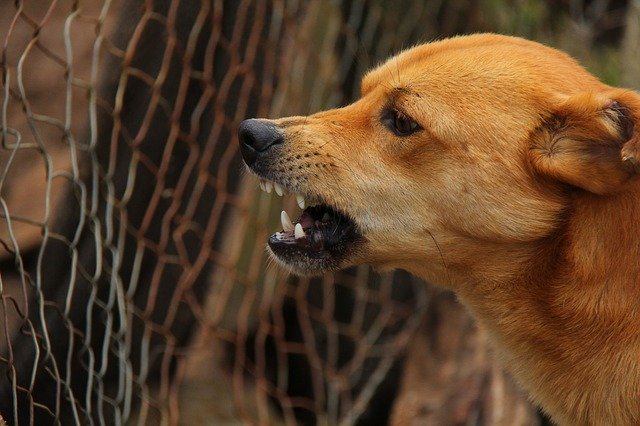
Food aggression can be roughly defined as aggressive and possessive behavior of dogs with regards to food. This behavior can include growling, biting, snarling, etc and can lead to very violent behavior in your dog if this is left unchecked. Many dogs have canine possession aggression and food aggression is part of that. If proper therapy and training is not provided to your puppy regarding this at an early age, it can lead to mental abnormality in the dog and can cause serious anti-social behavior as an adult.
Training Your Adult Dog against Food Aggression
Now if you already have an adult dog that has this condition, it is important to approach it very carefully when it is eating. Dogs with food aggression can attack you or your family member if they feel their food is threatened by them. It is best to call a professional dog trainer to train your dog rather than trying to handle this situation yourself. That is the safest way to handle the situation.
Your dog may view you and any other dog in the house as a threat to its food. So, if you have multiple dogs, the best thing is to feed them in separate rooms so as to reduce their anxiety about competition. Now, the important this is that your dog understands that you and your family are the leaders of the pack and are providers of the food and not the competition. When your training is done, your dog will appreciate your presence during mealtime and understand that you have given the food.
The natural pack mentality of dogs states that the pack leader first eats his meal and then allows the followers to eat. You can do the same with your dog. During mealtime, finish your meal first in front of the dog and then ask your dog to obey your commands like sitting, rolling over, etc and then feed it kibble from your own hands. Not only will this make it associate positive emotions in the dog about you and food, but it will also know it has to work for its meal, and it is not going to be just given to it. Your family members can take turns feeding the dog from their palm so that these feelings extend to them as well in the dog’s mind.
After continuing this for a few weeks, you can start feeding your dog from the bowl again. The meals should continue to be at fixed times. Keep the food bowl on the ground in front of the dog and make it wait. Only when you give the command to eat should it start eating. If the dog does not wait for your command and lunges at the bowl, take it away and start the process again. In a few tries, your dog will realize what it needs to do for you to leave the bowl on the ground and let it eat.
While the dog eats, you can pet it or stroke it to see its reaction. If it begins to growl or snap at you, take the bowl away. Then again start feeding the dog from your hand for the next few weeks and start again with the bowl. If your dog’s aggressive behavior continues, you really should seek professional help for your dog to avoid any harm to you and your family. If your dog takes well to eating from the bowl again, start randomly dropping some yummy treats in your dog’s bowl so that it associated your presence with tasty foods.
Conclusion
Food aggression is a real problem that many dogs across the united states face. Many dog owners do not understand how to handle it. We hope that the information shared in this post will be able to help you understand this issue and take the required steps to train and condition your dog better.







